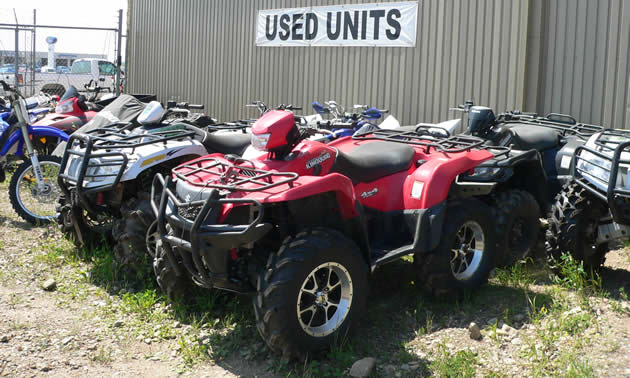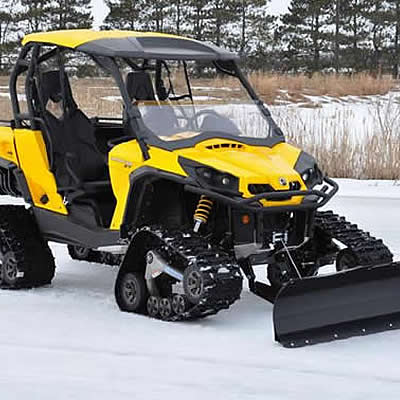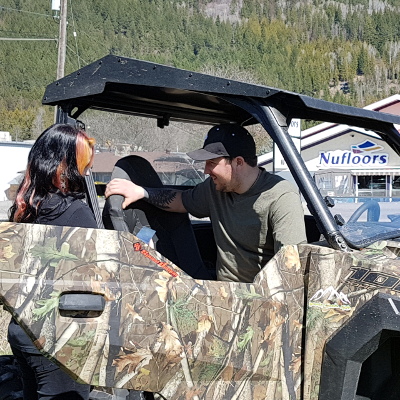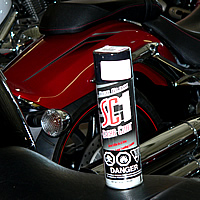Understanding trade-ins
When you are trading in your unit, it is important to realize that you are going to be receiving the wholesale value of your unit. When a dealership takes your unit in on trade, you must understand they will then take that unit and sell it to recapture some of their profit margin. Margins are thin when it comes to the powersports world. I can tell you from experience that it is an extremely good day if a dealer makes between $500 and $800 on a sale.
Children’s bikes have an even slimmer margin, contributing anywhere from $25 to $50 max to a dealerships profit. An interest fee is often applied to each unit, so your dealer may, in fact, be in the hole before your deal even starts. They could have your trade-in unit for several months, or longer, so most dealers will be cautious with the trade-ins that they accept. It is money out of their pocket, if they are sitting on a unit. The longer they sit, the more the unit will devalue.
Quite often, a customer will expect to apply the retail value to the new unit they are purchasing, leading to instant frustration because units on Kijiji or Craigslist had the same monetary value allocated to units for sale. They may feel that somehow they are being cheated out of dollars when they receive a lower dollar value for their powersports toy. When trading in, you are going to be receiving the wholesale value, not the retail value.
What is it worth?
The estimated value of your unit can be found in the Canadian Blue Book. This is a publication that is released yearly and it gives the approximate values for used vehicles. It will show the original price, the clean value, average value and the rough value. Most will be deemed average or somewhere in between the average and clean value if they are in excellent shape. Low kilometres and pristine body condition contribute greatly to the value of your unit.
When you bring your unit in for trade, make sure you clean it thoroughly. Nothing says lack of maintenance more than a person who won’t even take the time to clean the unit they are trying to sell. “If someone won’t take the time to clean it, they certainly won’t maintain it” is a common thought process.
Understand the difference between the wholesale value and retail value. When you’re doing a trade-in, it will be your wholesale value put against the retail value of the unit you’d like to purchase. You will have significantly more leverage on price flexibility if you’re not doing a trade-in. Most dealers will consign your pre-owned unit for no fee if you are buying a new one from them. Again this will work to your advantage. It may take a little time to sell it, but you will end up with more money in your pocket at the end of the day.
If you are consigning or selling your unit privately, set a realistic price at the start. If you are out to lunch on pricing, you will most certainly deter any potential suitors immediately. An unrealistic price leaves a long-lasting negative impression, long after the price has been reduced, so be smart and price your bike, sled, side-by-side or quad to sell.
Be aware of the current retail pricing offered by dealerships. Price protection and price equalization have resulted in an overall lower MSRP for Canadian dealers, as our Canadian dollar continues to gain strength. This could be a negative for a person selling a used quad, as a potential buyer will not buy a four-year-old unit for $4,300 if they can get brand new for $5,000. Again, be realistic.
Mods—good or bad?
Aftermarket parts do not necessarily add value. Many people will become angered when a value is allotted to their trade-in or sale based upon the unit itself. Mods can be a deterrent for many reasons. The biggest reason is the perceived lack of reliability after mods have been done. A machine is built to run at optimum potential in a wide variety of situations as it comes stock from the factory. The moment you start altering it, you may affect the overall performance, especially if the modification has to do with the engine.
Cans, running boards and venting for snowmobiles can all contribute to the saleability of your unit. Aftermarket exhaust, upgraded tires and upgraded plastics can contribute to the value of a bike. For ATVs, upgraded tires, clutching and storage options are a good bet for upgrades that add value. Some mods may not add direct monetary value, but you can bet for certain it will stimulate a quicker sale.
If the modifications were done by a professional, this too can add value. Joe Handyman backyard mechanic’s mod may not contribute one iota to your sale. Be smart and, again, be realistic. Have service records to back up a professional install.
Have patience and be positive
If you are consigning your unit with your dealer, be proactive and help market your unit. Direct traffic to your dealer's listing and have your own listings to further contribute to the sale.
Consistency is crucial. If you have your unit for sale on several different Internet sites, make sure the price stays constant to the price your dealer is listing it at. People could, in turn, use your own ad against your dealer's ad as leverage to lower the price.
Not every unit will be taken in on a trade. Business viability depends greatly on reputation and no dealer will put their name behind a unit if it could lack reliability. The original owner will be long gone and it will be the dealer who will be left holding the bag if something goes wrong. Be honest with your dealer when you bring your bike in for a trade. Let them know if there are any gremlins and quirks. It may be minor for a dealer to fix and if you are up front, it will give the dealer peace of mind, knowing there is nothing hidden from the deal.
’Tis the season
If you are trading in a snowmobile during the summer months and trying to trade a dirt bike or quad in the winter, you will not get as much for it as you would if you waited for the compatible month. Many dealers will simply not cross-season trade, for, again, they will have to sit on the unit for a while before selling it. It would have to be super-sweet to make it worth a dealership's while.
“I’ll trade you two 1999 Yamaha Mountain Maxes, a Cordoba and a goat for that brand new Wildcat . . .”
So many people want to recycle their junk and want to trade straight across for a brand new unit. Normally, this simply does not fly. Dealers need to make a profit in order for their business to be viable. Trading straight across for a new unit usually doesn’t happen. Be realistic. Perhaps you need to sell your goat, Cordoba and pre-owned sleds and use that money to go towards your new purchase. It will take time, but there is no other way to go.
Understand depreciation
The moment a new unit leaves the lot it takes a huge hit in depreciation. If you try to get out of your unit within the first year, be prepared to take at least a $1,000 hit. Children’s ATVs, snowmobiles and dirt bikes seem to hold their value more than most. Help your unit maintain value by keeping it clean and well maintained. Keep all of your service history and treat it with love.
If ever you have questions on this process, simply ask. Ask your salesperson or powersports dealer owner. Most will break it down completely for you so that you feel confident of the pending deal. If their customer is happy, they know they’ve done their job well, which is what matters the most at the end of the day.








Comments